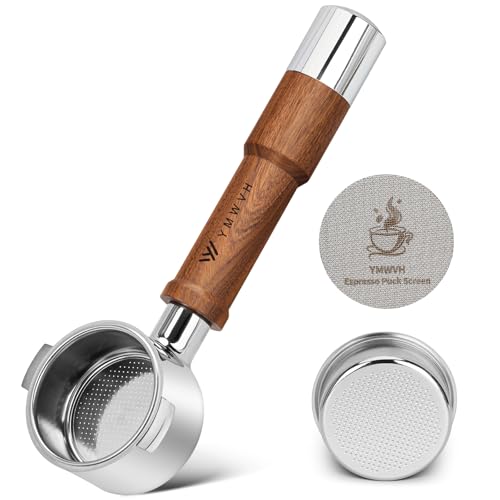The Importance of Choosing the Right Material for a Portafilter
When it comes to making the perfect espresso, the type of portafilter you use can make a significant difference. One often overlooked aspect of a portafilter is the material it is made from. The material not only affects the thermal conductivity but also the overall durability and longevity of the portafilter. In this article, we will explore the best materials for a portafilter and why they are worth considering.
Stainless Steel: The Most Popular Choice
Stainless steel is the most popular material choice for portafilters, and for good reason. It offers excellent heat retention, allowing for consistent extraction and ensuring that the coffee grounds are evenly saturated. Additionally, stainless steel is known for its durability, meaning that a stainless steel portafilter can withstand years of heavy use without showing signs of wear and tear. It is also resistant to rust and corrosion, making it easier to clean and maintain.
Brass: The Best for Heat Distribution
While stainless steel is known for its heat retention properties, brass is the best material for heat distribution. Brass is an alloy of copper and zinc and has excellent thermal conductivity. This means that when hot water passes through the portafilter, the heat is evenly distributed, resulting in a more balanced extraction. The downside of brass is that it is not as durable as stainless steel and may require more frequent cleaning and maintenance.
Aluminum: Lightweight and Affordable
Aluminum is often used as a budget-friendly alternative to stainless steel or brass. It is lightweight, making it easier to handle and maneuver when brewing espresso. However, aluminum is not as sturdy as other materials and is more prone to scratching and denting. It is also a poor conductor of heat, which can result in inconsistent extraction. If you are looking for a portafilter on a tight budget, aluminum may be a suitable option, but be prepared for some compromises in terms of heat distribution and durability.
Titanium: The High-End Option
If you are willing to invest in a top-of-the-line portafilter, titanium is the material of choice. Titanium is extremely lightweight, stronger than steel, and has excellent thermal conductivity. These factors make it a favorite among professional baristas who need a durable and reliable portafilter that can handle high volumes of espresso extraction. However, the high cost of titanium may deter some home users from considering it as an option.
Copper: Ideal for Heat Retention
Copper is another material option worth considering for its exceptional heat retention properties. Like brass, copper is an excellent conductor of heat, ensuring that the portafilter maintains a consistent temperature throughout the extraction process. This results in a more balanced and flavorful espresso. However, copper can be tricky to maintain and may require regular polishing to prevent discoloration and tarnishing. It is also a less common material choice for portafilters, so finding a copper portafilter may require some extra effort.






